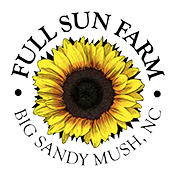We had a group of high school kids out here on Monday. Boy did we put them to work! They helped harvest all the over-wintering onions. They helped plant a bed of eggplant, a bed of tomatoes, and a bed of sunflowers. Drea had a few of them in the greenhouse getting a huge list of sowings completed. Many hand make light work! Needless to say they were a huge help and we were able to talk about all sorts of issues related to agriculture as we worked.
We’re still focusing on planting, though we’re getting close to being caught up on what we want in the ground. But we’re also turning our attention on the many thousands of weeds that have sprouted up in our fields. We’ve been using one of our two cultivating tractor to cultivate all the paths between the beds, as well as cultivating between the rows of many of the crops. We’ll be using the electric tractor today and tomorrow using slightly different cultivators on beets, carrots, and other smaller crops. It’s all an attempt to keep the weeds at bay.
The beet and kohlrabi greens are good, sautéed with garlic & onions, a little vinegar or soy sauce…
The boxes we use for the CSA shares are waxed and are not recyclable, but we do reuse them. So PLEASE remember to BRING THEM BACK next week.
Ideas for Cooking
Cookbooks are a great source of ideas and information, and for some, most fun to read. I have over 200, but use these few as the go to ones.
Joy of Cooking – yep it’s old and maybe thought to be a bit uncool. Yet, no better basic information on cooking is so available in one book. Recipies are good too. It’s all here.
The New Basics, Russo and Lukens – another and more modern basic cookbook full of good info and even better recipes.
Silver Palate, Julee Rosso and Sheila Lukens, 1979 – These are recipes from their food shop in Manhattan influencing the cooking revolution in the 1970’s along with Julia Child, Paul Prudhomme and James Beard. Still in print, easy, fun and the food is terrific. They have several books, all are great.
Essentials of Classic Italian Cooking, Marcella Hazan – Only Italian book you’ll need. I do like Mario Batali cookbooks too.
Moosewood, Mollie Katzen – from the 70’s and still in print. There are several editions. She made us realize that vegetarian cooking was more that stir fry.
My Mother’s Southern Kitchen, James Villas and Martha Pearl Villas – Martha Pearl (I plan to name my next female dog after her) presents wonderful comfort food that is at the top! Her desserts are killer too!
Mastering the Art of French Cooking, Julia Child – lot’s of great vegetable dishes that are not over the top productions as far as prep goes.
Louisiana Kitchen, Paul Prudhomme – He made us aware of Creole and Cajun cooking. His Louisiana Kitchen is maybe the best. This is easy food to prepare. Louisiana dishes are, in reality, stews with variations. They do not have to be spiced to the max to taste just peachy.
The Best Recipe, from the editors of Cook’s Illustrated – huge selection of recipes on all kinds of dishes.
You can make up your own recipes too. There’s nothing wrong with that!
SALAD DRESSING OF THE WEEK – from Marcella Hazan
CLASSIC ITALIAN – This is a place to use good oil. Regular virgin olive oil will do but great oil will make a difference. DO AT THE MOMENT OF EATING THE SALAD. BEST DONE AT TABLE.
Salt
Olive oil
Red wine vinegarThese go in this order. Salt to your taste and toss. Italians are liberal with salt. Add oil using enough to put a gloss on the greens. Start adding vinegar, a few drops will do, just enough to cut the oil a bit. Toss well and serve. This is about the flavor of the oil. Vinegar cooks the greens so that’s why the oil goes on first.
Rhubarb is related to sorrel, and even though it grows in the form of vegetables, it is a fruit. A US court so ruled in 1947. Rhubarb originated in Asia over five thousand years ago and came to America in the late 1700’s. By 1822 it was sold in produce markets and appears in cookbooks as early as 1833. In the 19th century, rhubarb was also used for medical treatments, for such things as constipated children.

